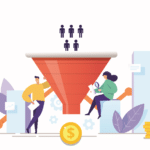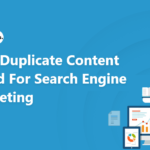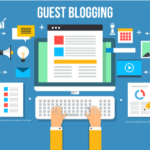Email marketing has long been a cornerstone of digital marketing strategies, allowing businesses to directly connect with their audience in a personalized manner. However, as the digital landscape evolves, so too must email marketing tactics. One such strategy that has gained prominence is email segmentation.
In this comprehensive guide, we will explore the intricacies of email segmentation techniques and their role in nurturing customer loyalty. From understanding the fundamentals of segmentation to implementing practical strategies, this article aims to provide businesses with actionable insights to enhance their email marketing efforts and foster stronger relationships with their audience.
Let’s delve into the world of email segmentation and discover how it can revolutionize your approach to customer engagement.
Dive Deeper
Email segmentation is like sorting your closet. Just like you wouldn’t keep your shoes with your shirts, businesses don’t send the same emails to everyone. Instead, they group their customers based on things they have in common. Let’s say you love basketball shoes, but your friend prefers sandals. If a store sends you both emails about a sale on sandals, you might not be interested. That’s where email segmentation comes in. It helps businesses send the right message to the right people.
Imagine you’re shopping online for sneakers. You add a pair to your cart but don’t buy them. Later, you get an email reminding you about the shoes you left behind. That’s email segmentation in action. The store noticed your behavior and sent you a personalized message, encouraging you to complete your purchase. This kind of tailored communication makes customers feel understood and valued.
Another example is when you sign up for a newsletter. You might receive a welcome email thanking you for joining. But if you’re a loyal customer who buys from the store regularly, you might get a special offer instead. By segmenting their email list, businesses can treat different customers differently, making each one feel like a VIP.
Why It Matters
- Boost Engagement: Email segmentation leads to higher open rates, click-through rates, and overall engagement with your emails. When customers receive messages tailored to their interests, they’re more likely to pay attention and take action.
- Drive Sales: By sending personalized offers and recommendations based on customer preferences, email segmentation can lead to increased sales. Customers are more inclined to make purchases when they feel like the message speaks directly to their needs and desires.
- Strengthen Relationships: Tailored communication fosters a sense of connection between the customer and the brand. When customers feel understood and valued, they’re more likely to develop loyalty towards the company.
- Enhance Customer Experience: Segmented emails provide customers with relevant information that aligns with their interests and behaviors. This improves their overall experience with the brand, leading to higher satisfaction levels.
- Increase Customer Lifetime Value: By consistently delivering valuable and personalized content to customers, email segmentation can increase their lifetime value to the business. Loyal customers who feel appreciated are more likely to continue buying from the company over time.
- Build Brand Loyalty: Ultimately, email segmentation contributes to building stronger brand loyalty. When customers receive personalized messages that cater to their individual preferences, they’re more likely to develop an emotional connection with the brand and remain loyal customers for the long term.
#1 Demographic Segmentation
Demographic segmentation is like sorting your friends into groups based on things like age, gender, or where they live. Businesses can use similar criteria to divide their customers into different segments. Let’s break down how this works with some examples.
Imagine you own a bookstore. You could segment your email list based on age groups—maybe one segment for teenagers, another for young adults, and a third for older readers. Each group might have different interests and preferences when it comes to books, so you can send them emails about genres or authors they’re most likely to enjoy.
Gender is another common demographic to consider. If you run a beauty product store, you might create segments for men and women. Then, you can send targeted emails featuring products that are more relevant to each group. For example, skincare products for women and grooming kits for men.
Location-based segmentation is also valuable, especially for businesses with physical locations or those offering region-specific promotions. Let’s say you own a chain of coffee shops. You could segment your email list based on customers’ zip codes or cities. This way, you can send emails about events or promotions happening at their nearest location, making the content more relevant and enticing.
By using demographic segmentation, businesses can ensure that their emails resonate with specific groups of customers. This personalized approach not only increases engagement but also fosters a sense of connection and loyalty among customers who feel understood and catered to.
#2 Behavioral Segmentation
Behavioral segmentation is all about understanding how your customers behave and interact with your brand. It’s like knowing which games your friends like to play or what movies they enjoy watching. Businesses can use this information to create segments based on customers’ actions, preferences, and engagement levels.
Let’s say you own a subscription-based streaming service like Netflix. You could segment your email list based on customers’ viewing habits. For example, you might have one segment for customers who love watching comedy shows and another for those who prefer action movies. By sending targeted emails featuring recommendations tailored to each group’s preferences, you can increase engagement and encourage more frequent usage of your service.
Another way to use behavioral segmentation is by tracking customers’ interactions with your emails. For instance, you could segment your list based on open rates or click-through rates. Customers who regularly open and engage with your emails may be more loyal and receptive to your marketing messages. By rewarding their engagement with exclusive offers or early access to new products, you can strengthen their loyalty and encourage them to continue interacting with your brand.
Behavioral segmentation can also help identify customers who are at risk of churning or losing interest in your brand. For example, if a customer hasn’t made a purchase or engaged with your emails in a while, you could send them a re-engagement email with a special discount or incentive to encourage them to come back.
Overall, behavioral segmentation allows businesses to tailor their email marketing efforts based on customers’ actions and preferences. By delivering relevant and personalized content, businesses can enhance customer loyalty and drive long-term engagement with their brand.
#3 Geographic Segmentation
Geographic segmentation means dividing your customers based on where they live or their location. Imagine organizing a party and inviting friends who live nearby separately from those who live far away. Similarly, by segmenting your email list geographically, you can tailor your email campaigns to suit the preferences and needs of customers in different regions.
For example, suppose you run a clothing store with both online and physical locations. You can segment your email list based on customers’ locations to send targeted emails about store events, promotions, or product availability in their area. Customers living in colder climates may receive emails about winter clothing collections, while those in warmer regions may receive updates on summer fashion trends.
Additionally, geographic segmentation allows you to personalize your emails based on local events or holidays. For instance, you can send emails promoting seasonal sales or special offers specific to holidays celebrated in different regions. By showing that you understand and cater to their local needs, you can strengthen the connection with your customers and enhance their loyalty to your brand.
Furthermore, geographic segmentation enables you to optimize the timing of your email campaigns based on different time zones. Sending emails at the most convenient times for your customers ensures that they are more likely to engage with your content and take action. This thoughtful approach demonstrates your commitment to providing a positive customer experience, ultimately leading to increased loyalty and satisfaction.
#4 Targeting Entry Points
Targeting entry points involves segmenting your email list based on how customers first discovered your brand. Just like different doors leading into a store, customers may enter your brand through various channels such as social media, your website, or referral programs. By understanding these entry points, you can tailor your email campaigns to align with customers’ initial interests and preferences.
For example, if a customer signed up for your email list after attending a webinar, you can send them follow-up emails containing related content or resources discussed during the webinar. Similarly, if a customer joined your email list through a referral program, you can acknowledge their referral and offer them exclusive rewards or discounts as a token of appreciation.
Moreover, targeting entry points allows you to nurture leads based on their journey from awareness to conversion. Customers who first interacted with your brand through social media may require different types of emails compared to those who discovered you through organic search. By segmenting your email list according to entry points, you can create personalized experiences that resonate with each customer’s unique path to engagement.
Additionally, targeting entry points helps you measure the effectiveness of your marketing channels and campaigns. By tracking which entry points generate the most email sign-ups or conversions, you can allocate resources more effectively and optimize your marketing strategies for better results.
Overall, targeting entry points enables you to establish meaningful connections with customers from the moment they discover your brand, ultimately leading to increased loyalty and long-term relationships.
#5 Tailoring Emails Based on Entry Point
When someone joins your email list, they may do so through various channels, such as signing up on your website, downloading a lead magnet, or making a purchase. Tailoring your email campaigns based on how subscribers entered your list can help nurture customer loyalty.
For instance, imagine you run an online fashion boutique. If a subscriber joins your list after downloading a style guide ebook, you can send them emails focused on fashion tips, new arrivals, and exclusive styling advice. On the other hand, if someone signs up after making their first purchase, you can send them emails showcasing similar products or complementary accessories.
Moreover, if a subscriber joins through a specific landing page promoting a sale or discount, you can follow up with emails related to ongoing promotions or upcoming sales events. This personalized approach shows subscribers that you value their interests and preferences, ultimately fostering stronger customer loyalty.
Additionally, custom email template design plays a crucial role in this segmentation technique. By creating visually appealing and engaging email templates tailored to different entry points, you can enhance the overall customer experience and encourage subscribers to continue engaging with your brand.
By tailoring your email campaigns based on how subscribers entered your list and incorporating custom email template design, you can deliver targeted content that resonates with their interests and motivations. This personalized approach not only strengthens customer relationships but also boosts customer loyalty and retention.
Conclusion:
In conclusion, email segmentation techniques offer powerful strategies for nurturing customer loyalty and strengthening relationships with your audience. By dividing your email list into smaller, targeted segments based on various criteria such as demographics, behaviors, and preferences, you can deliver more personalized and relevant content to your subscribers.
Through segmentation, you can tailor your email campaigns to meet the specific needs and interests of different customer segments, thereby increasing engagement, open rates, and ultimately, conversions. For example, by sending targeted emails to loyal customers with exclusive offers or rewards, you can show appreciation for their ongoing support and encourage repeat purchases.
Moreover, email segmentation allows you to track and analyze the performance of different segments, enabling you to refine your strategies and optimize future campaigns for better results. By continuously monitoring and adjusting your segmentation approach based on customer feedback and insights, you can ensure that your emails remain effective and impactful over time.
By implementing these segmentation techniques, businesses can foster stronger connections with their audience, drive customer loyalty, and ultimately, achieve greater success in their email marketing efforts. Whether you’re a small business looking to engage with your local community or a global brand reaching customers worldwide, email segmentation can help you deliver the right message to the right people at the right time, leading to long-term relationships and sustainable growth.
In summary, email segmentation is not just a marketing tactic; it’s a strategic approach to building trust, loyalty, and lasting partnerships with your customers. By harnessing the power of segmentation, businesses can unlock new growth opportunities and create meaningful experiences that keep customers coming back for more.






